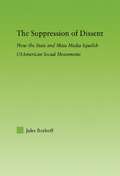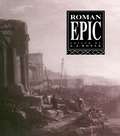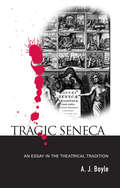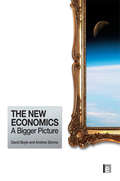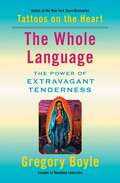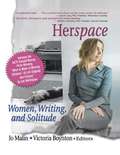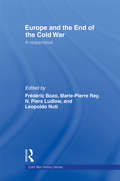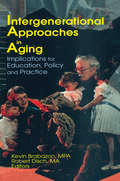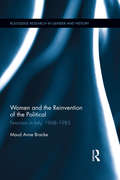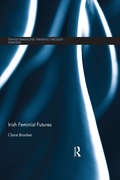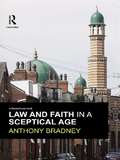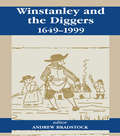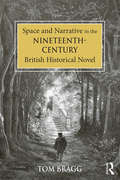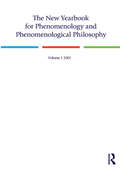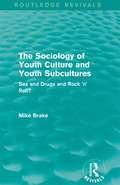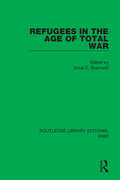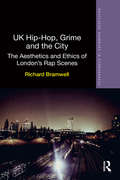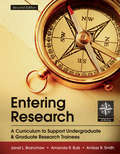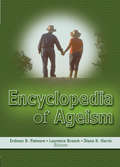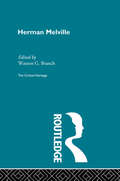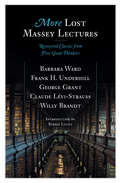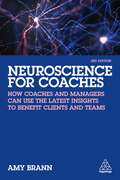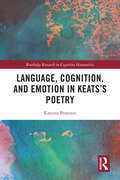Special Collections
Benetech’s Global Certified Accessible Titles
Description: Benetech’s GCA program is the first independent third-party EPUB certification to verify ebook accessibility. By creating content that is born accessible, publishers can meet the needs of all readers. Learn more: https://bornaccessible.benetech.org/
- Table View
- List View
Gut Health Hacks
by Lindsay BoyersHack your gut health and unlock a variety of benefits that a healthy gut brings with these 200 easy, accessible tips for promoting good bacteria, achieving balance in your gut microbiome, and feeling your best every day.Bloating. Heartburn. Weight gain. Frequent visits to the restroom. It&’s no surprise: bad gut health can have a big impact on your daily life. But what if there were quick and easy ways to improve your digestive system so you could feel your best every day? In Gut Health Hacks, you&’ll find 200 practical tips and tricks to support good bacteria and achieve a balanced gut mircrobiome. From ways to hack your meals to simple lifestyle changes, you&’ll find tips and tricks like: -Consuming ginger has a calming sensation for your digestive tract and can relieve gas and bloating. Sipping some ginger tea before bedtime can lead to a restful night&’s sleep. -Mental stress leads to digestive stress. Give yourself a designated relaxation time every day to help both your brain and your belly wind down. -Incorporating light yoga techniques into your everyday routine can help stimulate blood flow to your core, which can keep things moving with your digestive tract. -And much more! From improved mental health to weight loss to resolved digestion issues, balanced gut health can make all the difference. Now you can start feeling your best today with a little help from Gut Health Hacks.
The Suppression of Dissent
by Jules BoykoffDespite longstanding traditions of tolerance, inclusion, and democracy in the United States, dissident citizens and social movements have experienced significant and sustained - although often subtle and difficult-to observe - suppression in this country. Using mechanism-based social-movement theory, this book explores a wide range of twentieth century episodes of contention, involving such groups as mid-century communists, the Black Panther Party, the American Indian Movement, and the modern-day globalization movement.
Roman Epic
by A. J. BoyleRoman epic is both index and critique of the foundational culture of the western world. It is one of Europe's most persistent and determinant poetic modes. In this book distinguished Latinists examine the formation and evolution of Roman epic from its beginnings in the third century BC to the high Italian Renaissance. Featuring a variety of methodologies and approaches, it clarifies the literary importance and political and moral meaning of Roman epic.
Tragic Seneca
by A. J. BoyleTragic Seneca undertakes a radical re-evaluation of Seneca's plays, their relationship to Roman imperial culture and their instrumental role in the evolution of the European theatrical tradition.Following an introduction on the history of the Roman theatre, the book provides a dramatic and cultural critique of the whole of Seneca's corpus, analysing the declamatory form of the plays, their rhetoric, interiority, stagecraft and spectacle, dramatic, ideological and moral structure and their overt theatricality. Each of Seneca's plays is examined in detail, locating the force of Senecan drama not only in the moral complexity of the texts and their representations of power, violence, history, suffering and the self, but the semiotic interplay of text, tradition and culture.The later chapters focus on Seneca's influence on Italian, English and French drama of the Renaissance. A.J. Boyle argues that tragedians such as Cinthio, Kyd, Marlowe, Shakespeare, Webster, Corneille, and Racine owe a debt to Seneca that goes beyond allusion, dramatic form and the treatment of tyranny and revenge to the development of the tragic sensibility and the metatheatrical mind.Tragic Seneca attempts to restore Seneca to a central position in the European literary tradition. It will provide readers and directors of Seneca's plays with the essential critical guide to their intellectual, cultural and dramatic complexity.
The New Economics
by Andrew Simms and David BoyleEconomics sometimes seems to be stacked against social, environmental and individual well-being. But it doesn't have to be like this. A new approach to economics - deriving as much from Ruskin and Schumacher as from Keynes or Smith - has begun to emerge. Skeptical about money as a measure of success, this new economics turns our assumptions about wealth and poverty upside down. It shows us that real wealth can be measured by increased well-being and environmental sustainability rather than just having and consuming more things. This book is the first accessible and straightforward guide to the new economics. It describes the problems and bizarre contradictions in conventional economics as well as the principles of the emerging new economics, and it tells the real-world stories of how new economics is being successfully put into practice around the world. An essential guide to understanding new economics for all those who care about making economics work for people and planet.
DIAGRAM Reports 2017 - 2020
by Emily Moore and Bruce Walker and Volker Sorge and Charles LaPierre and Lisa Wadors Verne and Amaya Webster and Devin Boyle and Lisa Dieker and Sidney D'Mello and Jenna Gorlewicz and Alan Harnum and Mario Konecki and Richard Ladner and Amanda Lannan and Clayton Lewis and Douglas Schepers and Anh Bui and Sarah Ciras and Alexa Fay Siu and Andreas StefikWelcome to a compilation of the annual DIAGRAM Report spanning 2017 through 2020. If you are an educator or parent of a student with disabilities, or a student with disabilities yourself, we hope these reports will serve as a useful guide to some of the most important ways technology is changing the educational landscape. The DIAGRAM Center Report identifies key technologies and trends having the biggest impact or potential for impact on the education of students with disabilities in the United States. The report includes an overview of these technologies, information about relevant opportunities and challenges, and a list of resources and next steps.
The Whole Language
by Gregory BoyleGregory Boyle, the beloved Jesuit priest and author of the inspirational bestsellers Tattoos on the Heart and Barking to the Choir, returns with a call to witness the transformative power of tenderness, rooted in his lifetime of experience counseling gang members in Los Angeles. Over the past thirty years, Gregory Boyle has transformed thousands of lives through his work as the founder of Homeboy Industries, the largest and most successful gang-intervention program in the world. Boyle&’s new book, The Whole Language, follows the acclaimed bestsellers Tattoos on the Heart, hailed as an &“astounding literary and spiritual feat&” (Publishers Weekly) that is &“destined to become a classic of both urban reportage and contemporary spirituality&” (Los Angeles Times), and Barking to the Choir, deemed &“a beautiful and important and soul-transporting book&” by Elizabeth Gilbert, and declared by Ann Patchett to be &“a book that shows what the platitudes of faith look like when they&’re put into action.&” In a community struggling to overcome systemic poverty and violence, The Whole Language shows how those at Homeboy Industries fight despair and remain generous, hopeful, and tender. When Saul was thirteen years old, he killed his abusive stepfather in self-defense; after spending twenty-three years in juvenile and adult jail, he enters the Homeboy Industries training and healing programs and embraces their mission. Declaring, &“I&’ve decided to grow up to be somebody I always needed as a child,&” Saul shows tenderness toward the young men in his former shoes, treating them all like his sons and helping them to find their way. Before coming to Homeboy Industries, a young man named Abel was shot thirty-three times, landing him in a coma for six months followed by a year and a half recuperating in the hospital. He now travels on speaking tours with Boyle and gives guided tours around the Homeboy offices. One day a new trainee joins Abel as a shadow, and Abel recognizes him as the young man who had put him in a coma. &“You give good tours,&” the trainee tells Abel. They both have embarked on a path to wholeness. Boyle&’s moving stories challenge our ideas about God and about people, providing a window into a world filled with fellowship, compassion, and fewer barriers. Bursting with encouragement, humor, and hope, The Whole Language invites us to treat others—and ourselves—with acceptance and tenderness.
Herspace
by J Dianne Garner and Victoria Boynton and Jo MalinThis collection delves deeply into the power of solitude in a richly detailed exploration of the lives of women writers! The essays in this fascinating volume combine literary theory, autobiography, performance, and criticism, while opening minds and expanding concepts of women's roles both in the home and within academia along the way. Herspace: Women, Writing, and Solitude begins with a discussion of the importance of solitude to the works of a variety of writers, including Margaret Atwood, May Sarton, Virginia Woolf, Marguerite Duras, and Zora Neale Hurston, and then moves on to an examination of the actual solitary spaces of women writers. The book concludes with the stories of modern women asserting their right to a space of their own. These essays, full of pain and new growth, lessons learned and battles fought, resound with the honesty and courage the authors have found in the process of truly making their own homes. Herspace examines: the stereotyped spinster solitude as a process and a journey women's prison literature cars, empty nests, kitchen counters, and other found spaces for writing the meaning of a home of one's own creating beauty in solitary settings Contributors to Herspace have made a conscious effort to integrate the personal with the academic, and the result is a volume of surprising intimacy, a window into the world of women writers past and present actively engaging solitude. From finding and defining the muse to the identity issues of home ownership, Herspace, which includes Jan Wellington's essay What to Make of Missing Children (A Life Slipping into Fiction), (winner of the 2003 NCTE Donald Murray Prize for the best creative essay about teaching and/or writing published during the preceding year) provides you with the perspectives of women who are living these issues. As the editors write: The solitary space itself enables the writing process, protects it. And women, more than men, need this enabling protection. Women need to claim their own space, to bargain and plan and keep out of sight that solitary space in which to commune with their thoughts and feelings, to experience their creative process intimately. Herspace explores these women's experiences, revealing the unique creativity that comes from solitude.
Europe and the End of the Cold War
by N. Piers Ludlow and Marie-Pierre Rey and Frédéric Bozo and Leopoldo NutiThis book seeks to reassess the role of Europe in the end of the Cold War and the process of German unification. Much of the existing literature on the end of the Cold War has focused primarily on the role of the superpowers and on that of the US in particular. This edited volume seeks to re-direct the focus towards the role of European actors and the importance of European processes, most notably that of integration. Written by leading experts in the field, and making use of newly available source material, the book explores "Europe" in all its various dimensions, bringing to the forefront of historical research previously neglected actors and processes. These include key European nations, endemic evolutions in the Soviet Union and Eastern Europe, European integration, and the pan-European process. The volume serves therefore to rediscover the transformation of 1989-90 as a European event, deeply influenced by European actors, and of great significance for the subsequent evolution of the continent.
Intergenerational Approaches in Aging
by Robert Disch and Kevin BrabazonIn Intergenerational Approaches in Aging: Implications for Education, Policy, and Practice, leading practitioners and academics from a variety of disciplines come together to discuss theoretical issues, current practice, and future directions for this rapidly developing field. The authors address key topics such as defining the intergenerational field, the effects of the segregation of groups by age on social function and organization in our communities, and designing, implementing, and assessing programs that create cross-generational connections. Exploring ways to provide services to different age groups while tapping the strengths and skills of each age group, Intergenerational Approaches in Aging examines the application of intergenerational approaches to important social issues as well as specific challenges faced by practitioners. It makes suggestions for integrating intergenerational studies into the higher education system and for challenging segregated services and funding programs. As the book shows, promoting cooperation between diverse segments of society also depends on:making intergenerational programming a permanent feature of public schoolsunderstanding and meeting the social, mental health, and medical needs of grandparents who are raising their grandchildrenusing observational research to study and evaluate intergenerational program effectiveness and the relationships among the people involvedviewing differences among people as assetsdeveloping intergenerational program modelsproviding children with a 'life-cycle’view of the worldIntergenerational Approaches in Aging offers the personnel of state and local agencies on aging, nursing homes, senior centers, and geriatric homes practical advice, innovative ideas, and supportive materials for developing and implementing intergenerational activities and programs that can benefit all parties involved. Academics and school administrators will also benefit from this book as they learn concrete methods for integrating aging education into already existing curricula and building new conceptual frames of reference for a wide variety of social issues and historical topics.
Women and the Reinvention of the Political
by Maud Anne BrackeThis is the first in-depth study of the feminist movement that swept Italy during the "long 1970s" (1968-1983), and one of the first to use a combination of oral history interviews and newly-released archive sources to analyze the origins, themes, practices and impacts of "second-wave" feminism. While detailing the local and national contexts in which the movement operated, it sees this movement as transnationally connected. Emerging in a society that was both characterized by traditional gender roles, and a microcosm of radical political projects in the wake of 1968, the feminist movement was able to transform the lives of thousands of women, shape gender identities and roles, and provoke political and legislative change. More strongly mass-based and socially diverse than its counterparts in other Western countries at the time, its agenda encompassed questions of work, unpaid care-work, sexuality, health, reproductive rights, sexual violence, social justice, and self-expression. The case studies detailing feminist politics in three cities (Turin, Naples, and Rome) are framed in a wider analysis of the movement’s emergence, its transnational links and local specificities, and its practices and discourses. The book concludes on a series of hypotheses regarding the movement’s longer-term impacts and trajectories, taking it up to the Berlusconi era and the present day.
Irish Feminist Futures
by Claire BrackenThis book is about the future: Ireland’s future and feminism’s future, approached from a moment that has recently passed. The Celtic Tiger (circa 1995-2008) was a time of extraordinary and radical change, in which Ireland’s economic, demographic, and social structures underwent significant alteration. Conceptions of the future are powerfully prevalent in women’s cultural production in the Tiger era, where it surfaces as a form of temporality that is open to surprise, change, and the unknown. Examining a range of literary and filmic texts, Irish Feminist Futures analyzes how futurity structures representations of the feminine self in women’s cultural practice. Relationally connected and affectively open, these representations of self enable sustained engagements with questions of gender, race, sexuality, and class as they pertain to the material, social, and cultural realities of Celtic Tiger Ireland. This book will appeal to students and scholars of Irish studies, Irish feminist criticism, sociology, cultural studies, literature, women's studies, gender studies, neo-materialist and feminist theories.
Law and Faith in a Sceptical Age
by Anthony BradneyLaw and Faith in a Sceptical Age is an analysis of the legal position of religious believers in a dominantly secular society. Great Britain is a society based upon broadly liberal principles. It claims to recognise the needs of religious believers and to protect them from discrimination. But whilst its secular ideology pervades public discourse, the vestigial remains of a Christian, Protestant past are seen in things as varied as the structure of public holidays and the continued existence of established churches in both England and Scotland. Religious, Christian values also form the starting point for legal rules relating to matters such as marriage. Active religious communities constitute a very small minority of the population; however, those who belong to them often see their religion as being the most important element of their identity. Yet the world-view of these communities is frequently at odds with both the prevailing liberal, secular climate of Great Britain and its Christian, Anglican past. This necessarily entails a clash of ideologies that puts in question the secular majority's claim to want to protect religious minorities, the possibility of it being able to sufficiently understand the needs of those minorities and the desirability or practicality of any accommodation between the needs of the various religious communities and the secular mainstream of society. Law and Faith in a Sceptical Age addresses these issues by raising the question of whether a liberal, secular state can protect religion. Accommodation to different religious traditions forms part of the history of the legal systems of Britain. This book asks whether further accommodation can and should be made.
Winstanley and the Diggers, 1649-1999
by Andrew BradstockThis collection of essays explore the the Diggers, a group of 17th century men who shared a vision of a society based on collective ownership of the land. The themes discussed include the continuing power of leader Winstanley's writings, ideas on civil liberty and the economic background.
Space and Narrative in the Nineteenth-Century British Historical Novel
by Tom BraggDemonstrating that nineteenth-century historical novelists played their rational, trustworthy narrators against shifting and untrustworthy depictions of space and place, Tom Bragg argues that the result was a flexible form of fiction that could be modified to reflect both the different historical visions of the authors and the changing aesthetic tastes of the reader. Bragg focuses on Scott, William Harrison Ainsworth, and Edward Bulwer Lytton, identifying links between spatial representation and the historical novel's multi-generic rendering of history and narrative. Even though their understanding of history and historical process could not be more different, all writers employed space and place to mirror narrative, stimulate discussion, interrogate historical inquiry, or otherwise comment beyond the rational, factual narrator's point of view. Bragg also traces how landscape depictions in all three authors' works inculcated heroic masculine values to show how a dominating theme of the genre endures even through widely differing versions of the form. In taking historical novels beyond the localized questions of political and regional context, Bragg reveals the genre's relevance to general discussions about the novel and its development. Nineteenth-century readers of the novel understood historical fiction to be epic and serious, moral and healthful, patriotic but also universal. Space and Narrative in the Nineteenth-Century British Historical Novel takes this readership at its word and acknowledges the complexity and diversity of the form by examining one of its few continuous features: a flexibly metaphorical valuation of space and place.
The New Yearbook for Phenomenology and Phenomenological Philosophy
by Steven Crowell and Burt Hopkins and M. Brainard and R. Bruzina and A. Mickunas and T. Seebohm and T. SheehanThe New Yearbook for Phenomenology and Phenomenological Philosophy provides an annual international forum for phenomenological research in the spirit of Husserl's groundbreaking work and the extension of this work by such figures as Scheler, Heidegger, Sartre, Levinas, Merleau-Ponty and Gadamer.
The Sociology of Youth Culture and Youth Subcultures
by Michael BrakeFirst published in 1980, this book argues that subcultures are formed in defence of collectively experienced problems that arise from defects and contradictions in social structures. Mike Brake looks at the development of post-war youth culture in a sociological context and considers the class base of youth subcultures, showing that they generate a form of collective identity from which an individual identity can be achieved, outside that ascribed by class, education or occupation. Black youth and young females are two groups given special attention here since Brake notes they are prone to particular problems resulting from the racism and sexism inherent in much youth culture.
Refugees in the Age of Total War
by Anna C. BramwellThis book, first published in 1988, charts society’s responses to the huge numbers of refugees in Europe and the Middle East during and after the Second World War. At the close of the war large areas of Europe lay in ruins, and large numbers of refugees faced upheaval and famine. Political considerations influenced the decisions as to who received assistance, and refugees were forcibly repatriated or resettled – and in the analysis of these matters and more, both the refugee crises of the 1940s and their relevance today are highlighted.
UK Hip-Hop, Grime and the City
by Richard BramwellYoung people in London have contributed to the production of a distinctively British rap culture. This book moves beyond accounts of Hip-Hop’s marginality and shows, with an examination of the production, dissemination and use of rap in London, how this cultural form plays an important role in the everyday lives of young Londoners and the formation of identities. Through in-depth interviews with a range of leading and emerging rap artists, close analysis of rap music tracks, and over two years of ethnographic research of London’s UK Hip-Hop and Grime scenes, Bramwell examines how black and white urban youths use rap to come together to explore their creative abilities. By combining these methodological approaches in the development of a critical participant observation, the book reveals how the collaborative work of these urban youths produced these politically significant subcultures, through which they resist unfair and illegitimate policing practices and attempt to develop their economic autonomy in a city marred by immense social and economic inequalities.
Entering Research
by Amber Smith and Janet Branchaw and Amanda ButzFor students whose experience with science has been primarily in the classroom, it can be difficult to identify and contact potential mentors, and to navigate the transition to a one-on-one, mentor-student relationship. This is especially true for those who are new to research, or who belong to groups that are underrepresented in research. The Entering Research curriculum offers a mechanism to structure the independent research experience, and help students overcome these challenges.
Encyclopedia of Ageism
by Diana K. Harris and Erdman B. Palmore and Laurence BranchLearn more about age discrimination and how it affects us allThe Encyclopedia of Ageism is a comprehensive review of over 125 aspects of ageism, alphabetically arranged for easy access. Written by 60 experts, the book examines topics such as anti-aging, stereotypes, and the mediawith numerous references for further information. You'll find an alphabetical list of the entries, a detailed index, and a list of the entries categorized by subject, to help you find what you need fast. This resource will increase your awareness about the many facets of ageism and provide you with a wealth of concepts, theories, and facts about ageism. This important resource exposes the many faces of dehumanization through the elder neglect and prejudice that results from today's worldwide youth-oriented culture. The Encyclopedia of Ageism will help you recognize ageism when you encounter it and avoid it in your own thinking and actions. The book is a valuable guide for anyone working with older people and for older people themselves.With the Encyclopedia of Ageism, you will be able to identify personal, cultural, and institutional sources of ageism, such as: age denial age inequality/stratification sexuality scapegoating abuse the disengagement theory and so much more!This eye-opening reference shows how discrimination against elders can have consequences to the aged, the youth, the economy, and society as a whole. The Encyclopedia of Ageism promotes a future where the human rights of older persons are preserved and aging is considered a positive stage in the cycle of life. With this book, you will find strategies for reducing ageism, changing perceptions, and enhancing the quality of life for senior citizens andsomedayyourself.
Herman Melville
by Watson G. BranchThis set comprises 40 volumes covering 19th and 20th century European and American authors. These volumes will be available as a complete set, mini boxed sets (by theme) or as individual volumes. This second set complements the first 68 volume set of Critical Heritage published by Routledge in October 1995.
More Lost Massey Lectures
by Claude Levi-Strauss and George Grant and Willy Brandt and Frank Underhill and Barbara WardThe CBC Massey Lectures, Canada's preeminent public lecture series, are for many of us a highly anticipated annual feast of ideas. However, some of the finest lectures, by some of the greatest minds of modern times, have been lost for many years -- unavailable to the public in any form. This is the second volume of recovered lectures, a follow-on to The Lost Massey Lectures, and features: Nobel Peace Prize recipient Willy Brandt on the dangerous inequities between developing and industrialized nations in Dangers and Options: The Matter of World Survival; George Grant on the worsening predicament of the West through an examination of the thought of Friedrich Nietzsche in Time as History; Claude Levi-Strauss on the nature and role of myth in human history in Myth and Meaning; Frank Underhill on the deficiencies of the Canadian constitution in The Image of Confederation; and Barbara Ward, in the very first Massey Lecture, on the origin and predicament of underdeveloped countries in The Rich Nations and the Poor Nations. More Lost Massey Lectures includes an introduction by Bernie Lucht, who has been the executive producer of CBC Radio's Ideas and the Massey Lectures since 1984.
Neuroscience for Coaches
by Amy BrannMany coaching tools and techniques are now well established, but how do they actually work? The third edition of Neuroscience for Coaches answers this question to help coaches and managers deliver greater value to clients and employees.Based on extensive research, Neuroscience for Coaches provides a clear explanation of the aspects of neuroscience that are relevant to coaching so coaches can describe to clients why particular techniques work and the benefits to be gained from using them. It also features interviews with Marshall Goldsmith, Susan Grandfield, Christian van Nieuwerburgh and Kim Morgan on topics including mindfulness and behaviour change in coaching.This fully updated third edition covers the latest neuroscientific research on key brain areas and their functions, such as the Prefrontal cortex and Amygdala which affect attention, processing and emotional regulation. With tips and insights throughout, it crucially demonstrates the ways in which coaches and managers who coach can use this information effectively and practically in their everyday work. Neuroscience for Coaches is a vital resource for improving coaching practice with the latest scientific developments, tools and techniques.
Language, Cognition, and Emotion in Keats's Poetry
by Katrina BrannonLanguage, Cognition, and Emotion in Keats’s Poetry applies an innovative cognitive linguistic approach to the poetry of John Keats, the first of its kind to employ a cognitive-based framework to explore the expression and articulation of emotion in his work. Brannon adopts an embodied perspective to emotion, rooted in cognitive linguistics, cognitive grammar, and cognitive poetics but also works from figurative language and stylistics, in examining a selection of Keats’s poems. This approach allows for a close interrogation of the texts themselves but also the languages that compose them, comprising lexical and grammatical elements, which, when taken together, bring out the emotional saliency of Keatsian poetry. While revealing fresh insights into the work of John Keats, the book also sheds further light on the importance of cognitive approaches to poetic and grammatical analyses and how both language and the body can serve as forms of communication through which metaphors can be expressed and contextualized. This volume will appeal to students and scholars interested in cognitive linguistics, figurative language, emotion studies, cognitive science, and Anglophone poetry.

